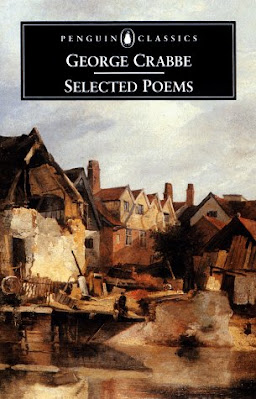How does Crabbe describe the lives and sufferings of the village inmates
George Crabbe, an 18th-century English poet, often wrote
about the lives and sufferings of the village inmates, particularly those from
the lower class, in his poetry. He often depicted their lives as harsh,
difficult, and full of suffering.
Crabbe's poetry often describes the poverty, hunger, and
hardship faced by the village inmates. He writes about the struggle of the
lower class to make a living, often depicting them as trapped in a cycle of
poverty and hardship, with little hope of improving their situation.
Crabbe also writes about the poor living conditions of the
village inmates, often describing overcrowded and unsanitary housing, and the
lack of basic necessities such as food and clean water. He also describes the
harshness of the rural labor, the dangers of working in the fields, and the
toll it takes on their health and well-being.
How does Crabbe describe the lives and sufferings of the village
inmates
Crabbe's poetry also highlights the social injustices faced
by the village inmates, particularly the lack of education, healthcare and
opportunities. He writes about the lack of access to education and the impact
it has on their ability to improve their lives, and the lack of access to basic
healthcare and the toll it takes on their health and well-being.
In summary, Crabbe's poetry describes the lives and
sufferings of the village inmates as harsh, difficult, and full of suffering,
marked by poverty, hunger, and hardship, poor living conditions, and social injustice.
He often portrayed the lower class as trapped in a cycle of poverty and
hardship, with little hope of improving their situation.
How does Crabbe describe the lives and suffering of the village
inmates
George Crabbe, an 18th-century English poet, often wrote
about the lives and sufferings of the village inmates, particularly those from
the lower class, in his poetry. He often depicted their lives as harsh,
difficult, and full of suffering.
Crabbe's poetry often describes the poverty, hunger, and
hardship faced by the village inmates. He writes about the struggle of the
lower class to make a living, often depicting them as trapped in a cycle of
poverty and hardship, with little hope of improving their situation. He
portrays the people as victims of their circumstances, unable to rise above
their conditions, and describes the injustice of a society that perpetuates
their suffering.
Crabbe also writes about the poor living conditions of the
village inmates, often describing overcrowded and unsanitary housing, and the
lack of basic necessities such as food and clean water. He also describes the
harshness of the rural labor, the dangers of working in the fields, and the
toll it takes on their health and well-being. He often emphasizes the physical
and mental toll of their hard labor and the lack of rest and recreation.
How does Crabbe describe the lives and sufferings of the village
inmates
Crabbe's poetry also highlights the social injustices faced
by the village inmates, particularly the lack of education, healthcare and
opportunities. He writes about the lack of access to education and the impact
it has on their ability to improve their lives, and the lack of access to basic
healthcare and the toll it takes on their health and well-being. He often
depicted the villagers as uneducated and unaware of the world outside their
immediate surroundings.
In summary, Crabbe's poetry describes the lives and
sufferings of the village inmates as harsh, difficult, and full of suffering,
marked by poverty, hunger, and hardship, poor living conditions, and social
injustice. He often portrayed the lower class as trapped in a cycle of poverty
and hardship, with little hope of improving their situation, and emphasized the
physical, emotional and societal toll it takes on them.
How does Oliver Goldsmith describe The Deserted Village
In his poem "The Deserted Village," Oliver
Goldsmith describes a rural village that has been abandoned and fallen into
ruin. The poem is a pastoral elegy that mourns the loss of the rural way of
life and the displacement of the villagers due to the enclosure of common lands
and the migration of people to the cities.
The poem begins by describing the once-thriving village, with
its green fields and happy inhabitants. Goldsmith paints a nostalgic picture of
the village, depicting it as a place of peace and simplicity, where the
villagers lived in harmony with nature and each other.
As the poem progresses, Goldsmith describes how the village
has been deserted, and the fields have been enclosed and turned into pasture
for sheep. The houses and cottages are described as empty and falling into
ruin, and the churchyard is overgrown with weeds. He describes how the
villagers have been forced to leave their homes and move to the cities in
search of work.
How does Crabbe describe the lives and sufferings of the village
inmates
Goldsmith also describes the impact of the loss of the
village on the remaining inhabitants, particularly the old and the poor, who
are left behind to struggle in poverty. He also describes the loss of community
and the traditional way of life as the village is deserted.
Throughout the poem, Goldsmith uses imagery and language that
evokes a sense of sorrow and nostalgia for the loss of the rural way of life
and the displacement of the villagers. He also uses imagery of nature and the
changing seasons to reflect the loss of the village and its inhabitants.
ALSO READ:-
What is the usefulness of poetry as stated by Shelley in his “Defence”








0 comments:
Note: Only a member of this blog may post a comment.